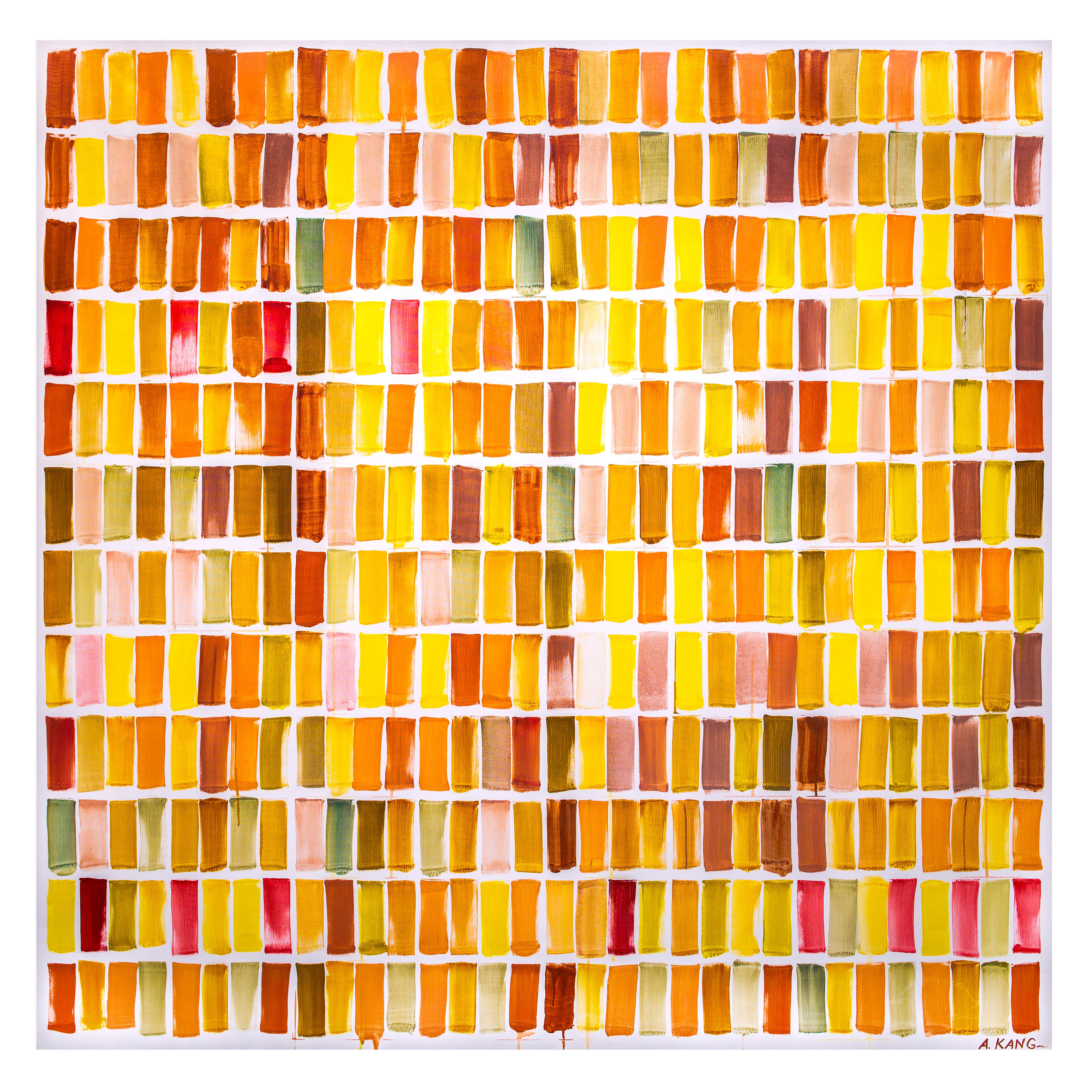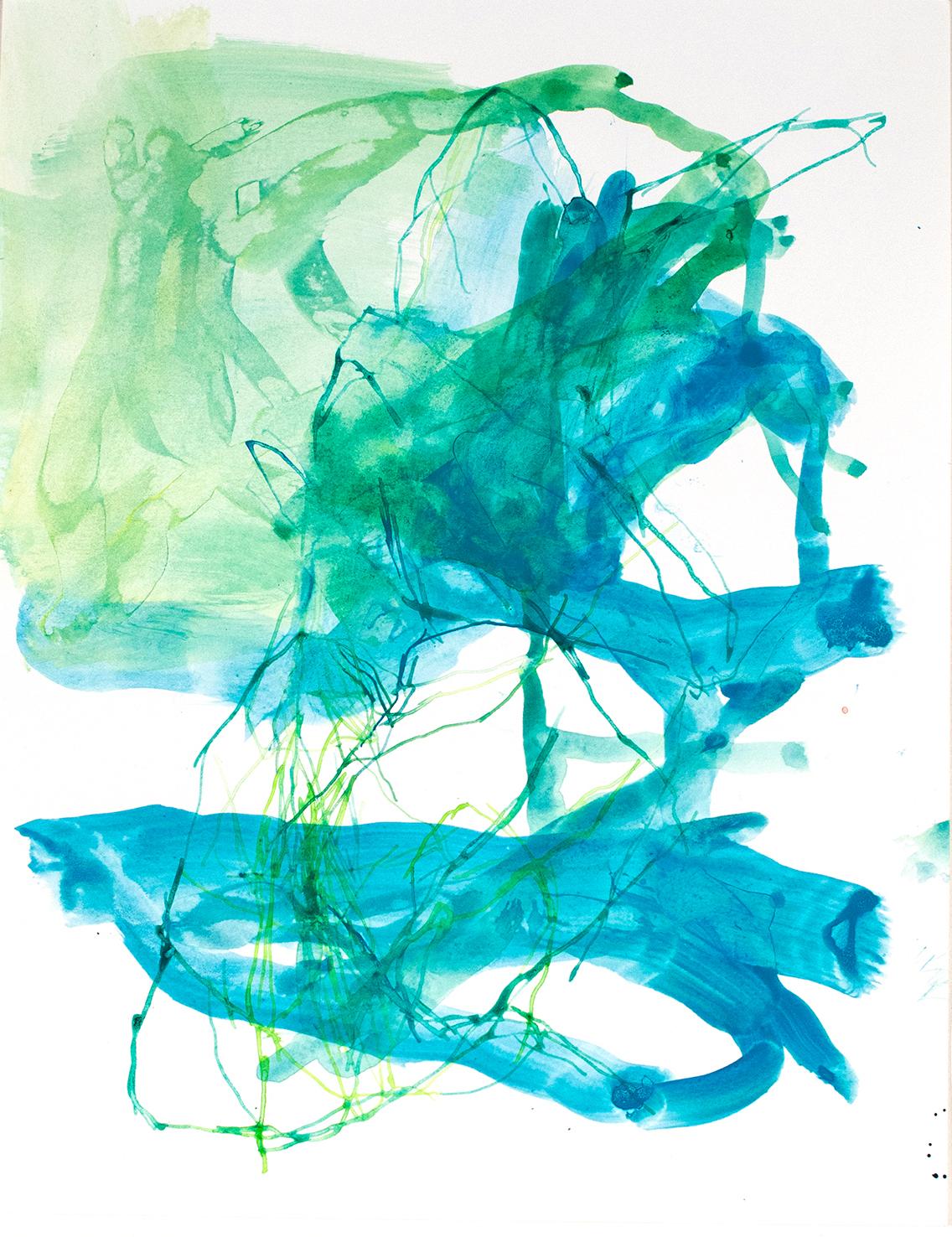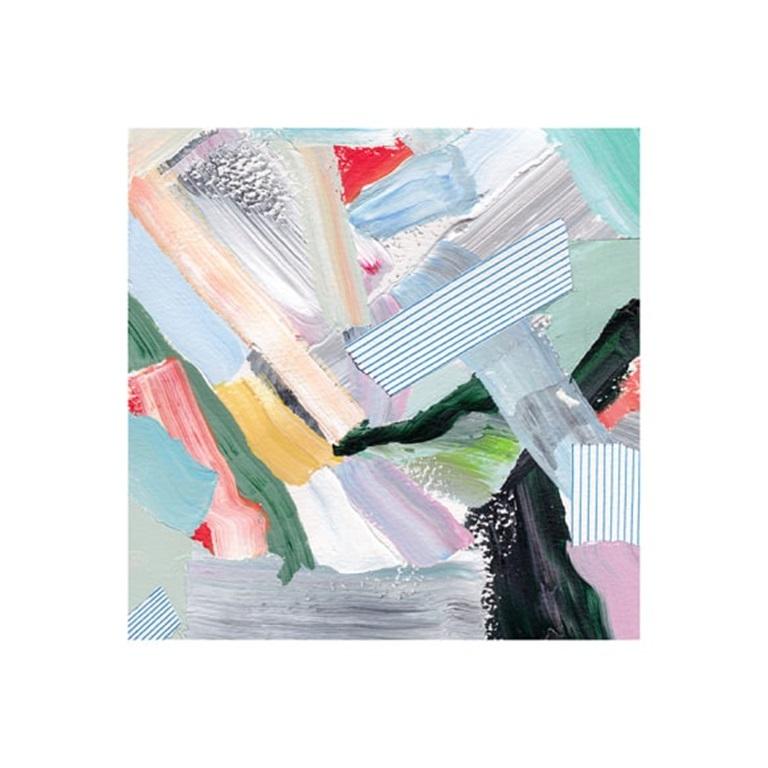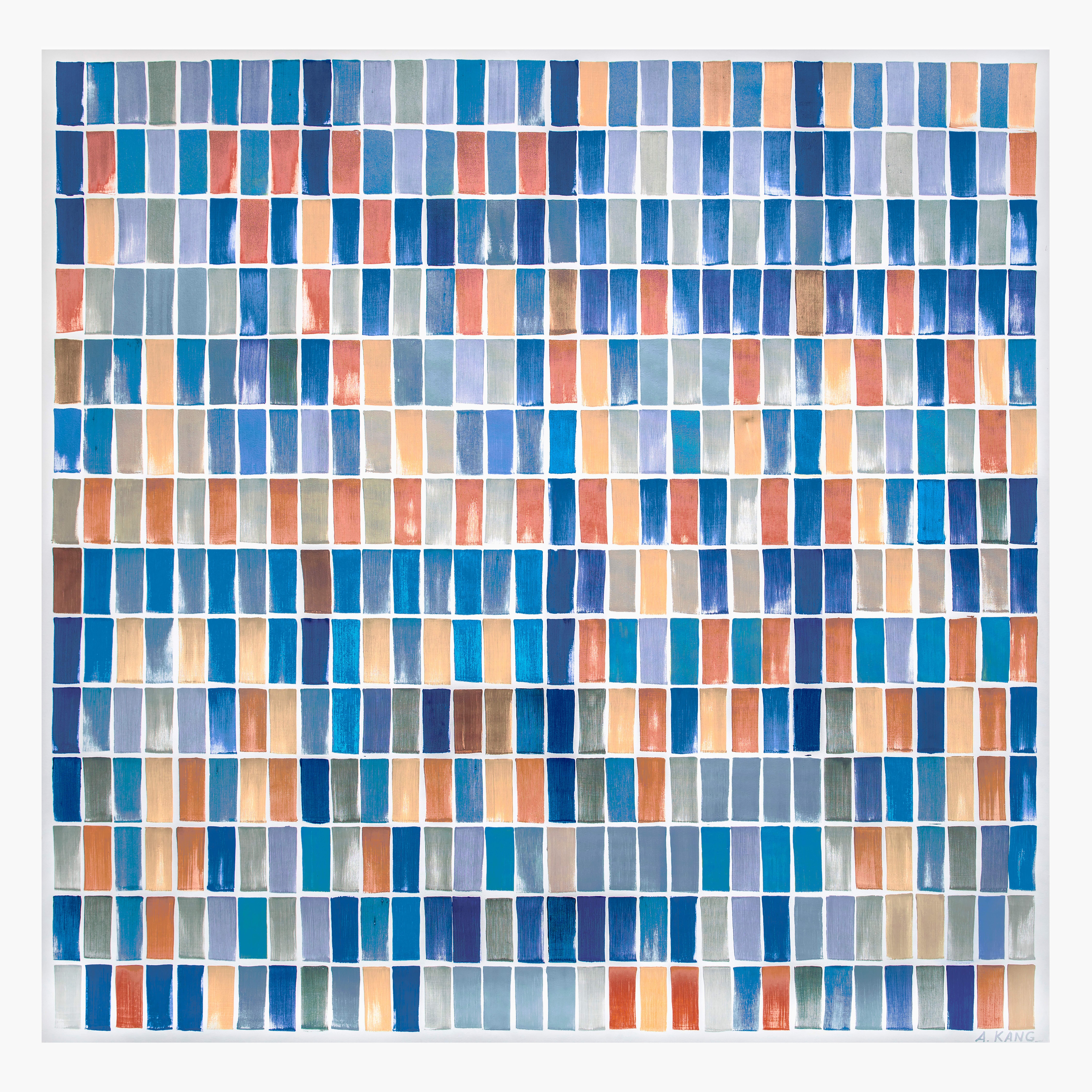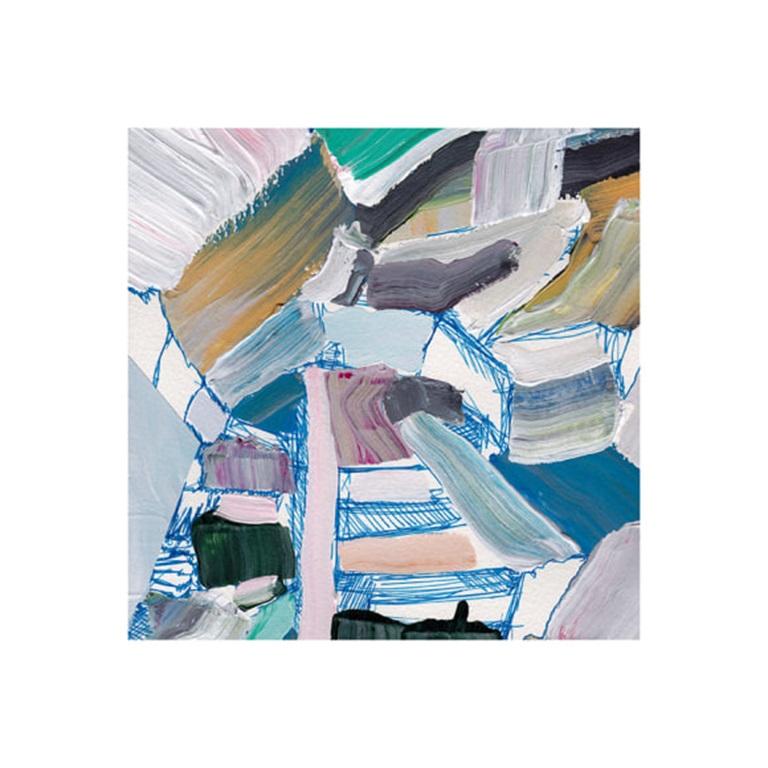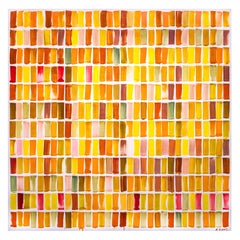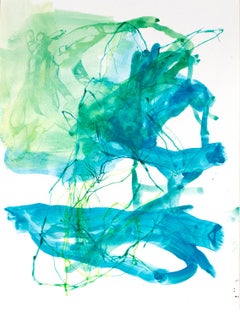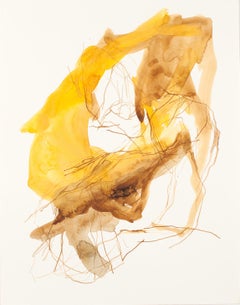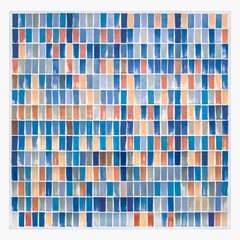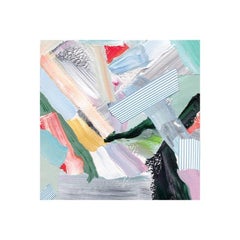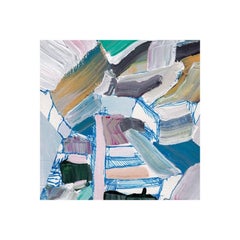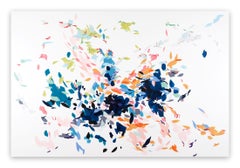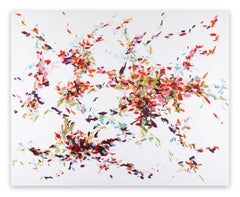Items Similar to Bach Suite No. 4 in E flat major- Archival Pigment Print
Want more images or videos?
Request additional images or videos from the seller
1 of 9
Amy KangBach Suite No. 4 in E flat major- Archival Pigment Print2017
2017
$525
£392.15
€454.64
CA$728.95
A$817.06
CHF 425.42
MX$9,976.63
NOK 5,401.27
SEK 5,119.92
DKK 3,392.07
Shipping
Retrieving quote...The 1stDibs Promise:
Authenticity Guarantee,
Money-Back Guarantee,
24-Hour Cancellation
About the Item
This is a Archival Pigment Print.
Paper Size: 24 in x 19.5 in
Frame Size: 28 in x 23.5 in
Artwork priced unframed. Contact the gallery for framing options.
About the Artwork:
The paintings in the Bach series are drawn from musical scores by Johann Sebastian Bach. Each stroke represents a note, and factors such as key and chordal harmony inform the color palette selected. The resulting image displays a visual illustration of harmonic motifs already inherent in the music. Amy Kang is a professional painter and cellist based in NY. She studied painting at the L'Ecole Marchutz (Aix-en-Provence, France).
- Creator:
- Creation Year:2017
- Dimensions:Height: 19.5 in (49.53 cm)Width: 24 in (60.96 cm)
- More Editions & Sizes:Framed in Natural WoodPrice: $950Framed in BlackPrice: $950Framed in WhitePrice: $950
- Medium:
- Movement & Style:
- Period:
- Framing:Framing Options Available
- Condition:
- Gallery Location:New York, NY
- Reference Number:1stDibs: LU51211277392
Amy Kang
Amy Kang is a professional painter and cellist based in New York. She studied painting at the Ecole Marchutz (Aix-en-Provence, France).
About the Seller
5.0
Vetted Professional Seller
Every seller passes strict standards for authenticity and reliability
Established in 1998
1stDibs seller since 2014
31 sales on 1stDibs
- ShippingRetrieving quote...Shipping from: Norcross, GA
- Return Policy
Authenticity Guarantee
In the unlikely event there’s an issue with an item’s authenticity, contact us within 1 year for a full refund. DetailsMoney-Back Guarantee
If your item is not as described, is damaged in transit, or does not arrive, contact us within 7 days for a full refund. Details24-Hour Cancellation
You have a 24-hour grace period in which to reconsider your purchase, with no questions asked.Vetted Professional Sellers
Our world-class sellers must adhere to strict standards for service and quality, maintaining the integrity of our listings.Price-Match Guarantee
If you find that a seller listed the same item for a lower price elsewhere, we’ll match it.Trusted Global Delivery
Our best-in-class carrier network provides specialized shipping options worldwide, including custom delivery.More From This Seller
View AllBach 2-Warm tone pattern print edition on paper in square format
By Amy Kang
Located in New York, NY
This is a Archival Pigment Print.
Paper Size: 30 in x 30 in
Frame Size: 34 in x 34 in
Artwork priced unframed. Contact the gallery for framing options.
About the Artwork:
The pa...
Category
21st Century and Contemporary Abstract Abstract Drawings and Watercolors
Materials
Paper, Archival Pigment
Lacawac #79 - Colorful ink on paper edition with Archival Pigment Print
By Elizabeth Gilfilen
Located in New York, NY
Archival Pigment Print of rich abstraction by Artist Elizabeth Gilfilen.
Edition of 20
Paper Size: 20 in x 24 in
Frame Size: 23.5 in x 27.5 in
Artwork priced unframed. Please cont...
Category
21st Century and Contemporary Abstract Abstract Prints
Materials
Paper, Archival Pigment
Lacawac #49 - Colorful ink on paper edition with Archival Pigment Print
By Elizabeth Gilfilen
Located in New York, NY
Archival Pigment Print of rich abstraction by Artist Elizabeth Gilfilen.
Edition of 20
Paper Size: 20 in x 24 in
Frame Size: 23.5in x 27.5 in
Artwork priced unframed. Please contac...
Category
21st Century and Contemporary Abstract Abstract Prints
Materials
Paper, Archival Pigment
Bach Prelude 1-Cool tone pattern print edition on paper in square format
By Amy Kang
Located in New York, NY
This is a Archival Pigment Print.
Paper Size: 30 in x 30 in
Frame Size: 34 in x 34 in
Artwork priced unframed. Contact the gallery for framing options.
About the Artwork:
The pa...
Category
21st Century and Contemporary Abstract Abstract Drawings and Watercolors
Materials
Paper, Archival Pigment
Cold Wave #3- Colorful ink on paper edition with Archival Pigment Print
By Elizabeth Gilfilen
Located in New York, NY
Archival Pigment Print of rich abstraction by Artist Elizabeth Gilfilen.
Edition of 20
Paper Size: 20 in x 24 in
Frame Size: 23.5in x 27.5 in
Artwork priced unframed. Please contac...
Category
21st Century and Contemporary Abstract Abstract Prints
Materials
Paper, Archival Pigment
Tug #8 - Colorful ink on paper edition with Archival Pigment Print
By Elizabeth Gilfilen
Located in New York, NY
Archival Pigment Print of rich abstraction by Artist Elizabeth Gilfilen.
Edition of 20
Paper Size: 20 in x 24 in
Frame Size: 21 in x 25 in
Artwork priced unframed. Please contact t...
Category
21st Century and Contemporary Abstract Abstract Prints
Materials
Paper, Archival Pigment
You May Also Like
559 #3, Archival Pigment Print by Feodor Voronov, 2018
By Feodor Voronov
Located in Orange, CA
559 #3, Archival Pigment Print by Feodor Voronov, 2018
Additional information:
Medium: Archival pigment print
Dimensions: Image size: 8" x 8"
Paper size: 12" x 12"
Edition size: 20 ...
Category
21st Century and Contemporary Abstract Prints
Materials
Archival Pigment
559 #1, Archival Pigment Print by Feodor Voronov, 2018
By Feodor Voronov
Located in Orange, CA
559 #1, Archival Pigment Print by Feodor Voronov, 2018
Additional information:
Medium: Archival pigment print
Dimensions: Image size: 8" x 8"
Paper size: 12" x 12"
Edition size: 20 ...
Category
21st Century and Contemporary Abstract Prints
Materials
Archival Pigment
Record of Undefined Color 23 (Abstract painting)
By Kyong Lee
Located in London, GB
Emotional Color Field 23 (Abstract painting)
Acrylic on canvas - Unframed.
This artwork will be shipped rolled in a dent-resistant tube.
This method is especially safe for large wo...
Category
2010s Abstract Abstract Paintings
Materials
Canvas, Acrylic
Record of Undefined Color 30 (Abstract painting)
By Kyong Lee
Located in London, GB
Record of Undefined Color 30 (Abstract painting)
Acrylic on canvas - Unframed.
This artwork will be shipped rolled in a dent-resistant tube. This method is especially safe for larg...
Category
2010s Abstract Abstract Paintings
Materials
Canvas, Acrylic
Record of Undefined Color 30 (Abstract painting)
By Kyong Lee
Located in London, GB
Record of Undefined Color 30 (Abstract painting)
Acrylic on canvas - Unframed.
This artwork will be shipped rolled in a dent-resistant tube. This method is especially safe for larg...
Category
2010s Abstract Abstract Paintings
Materials
Canvas, Acrylic
Feeling R - Fine art giclÃCe print, Digital on Watercolor Paper
By Xiaoyang Galas
Located in Yardley, PA
Feeling R - Fine art print. Fine art reproduction with this premium textured fine art paper, 300g/m², reminiscent of traditional watercolour p...
Category
2010s Abstract Abstract Prints
Materials
Digital
